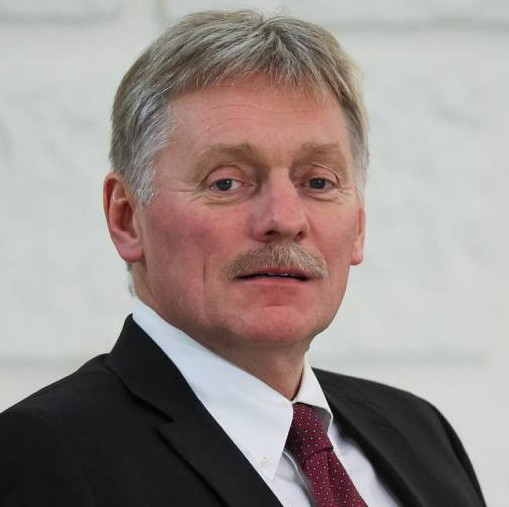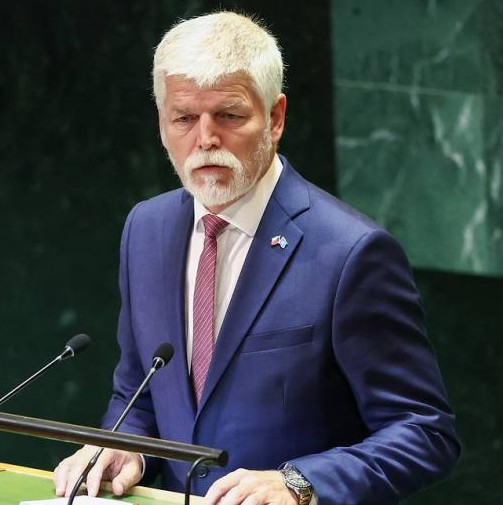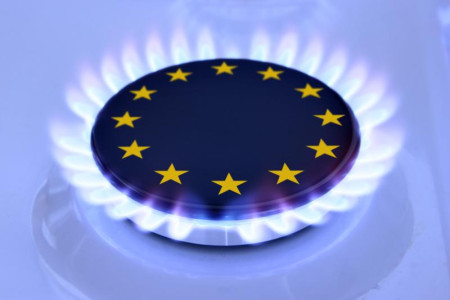Transit of Russian gas via Ukraine is about to stop early on January 1. Vladimir Putin said on December 26 it would be impossible to agree on a new transit contract for pumping gas from Russia through Ukraine by the year-end. In turn, Kiev came up with a harsh statement that amid its ongoing conflict with the Russian Federation it would not renew the relevant agreement with Gazprom. The time is now ripe to assess the fall-out.
Apparently, Ukraine’s "overdue" leader Vladimir Zelensky has decided to make a gift to the United States as it has an interest in making Europe drop Russian pipeline supplies in favor of its own liquefied natural gas (LNG). Apart from that, Kiev is seeking to permanently sever energy ties between Russia and Europe, hopeful that this entails even greater support from Brussels. And all of this despite the perils of such a move for Ukraine. It is not even about losing transit money ($700-800 million per year) but a potential failure of that country’s entire gas pipeline system. And how Ukrainian consumers will get their gas supply in the future (today, everything can be attributed to the war) is not entirely clear.
A number of EU countries have openly criticized the Kiev regime, with Slovak Prime Minister Fico playing a leading part in this respect. Transit termination is also opposed by Hungary and the right-wing radical Freedom Party of Austria, which is tasked with forming a new government. Bratislava is seeking to raise the issue of resuming transit at the EU level.
But so far, the European "mainstream" vector is here to stay. The EU Executive Committee has repeatedly stated in public that there it has no interest in prolonging the transit of Russian gas via Ukraine, and that "the EU is ready to stop transit as there are alternatives." A clear thing is that Europe is not going to freeze anyway. However, gas prices are truly high in the region (they rose to about $500 per thousand cubic meters on January 15), and industry keeps experiencing reduced consumption. So, the aftermath of Brussels-staged energy experiment is certainly going to make itself felt.
Following the meeting of the Supreme Eurasian Economic Council, Vladimir Putin told reporters that Russia had never refused to supply gas to Europe and was ready to. In particular, fuel could have been sent through Poland if the republic had not blocked the Yamal—Europe route. The Russian President also warned that gas prices in Europe would rise as supplies were brought to a halt.
In 2025, Russian mainline gas keeps flowing to the EU through the Turkish Stream alone. Which, by the way, is also in the crosshairs of the Ukrainian Armed Forces: January 11 saw the Kiev regime launch an air attack on the infrastructure of Russia’s compressor station in Kuban, through which gas is pumped. The remaining Russian gas delivery routes to the EU are idle due to the stance taken by local politicians.
But so far, the most severe suspension of transit has hit Moldova and Transnistria. Brussels and Chisinau do want the energy crisis in Transnistria to become a political one.
At the same time, the European Union is still "hedging" with Russian LNG it gets increasingly by sea. A few days after Ukraine stopped transiting Russian gas through its pipelines, Rystad Energy published a report saying that in 2023, Europe imported a record amount of LNG from Russia, despite attempts to stop financing the country by means of purchasing its blue fuel. According to analysts, 17.8 million tons of Russian LNG arrived in European ports in 2024, which is 2 million tons more than a year before. Gas expert at Rystad Energy Jan-Eric Fähnrich noted that LNG supplies are not just growing but reaching record levels.
The problem of Europe's gas supply would also worsen issues existing in the Norwegian gas sector. The country's natural gas production increased by 6.9 percent in 2024 to a record 124 billion cubic meters, but this year the output is expected to decline, the local oil and gas production authority (NOD) said on January 9.
The key replacement channel for Russian pipeline supplies, including capacities of Ukraine’s Gas Transmission System (GSTU), is shipments of liquefied natural gas, primarily from the United States. But the price of such batches is at the fore here, too. For example, in the Asian market it will be consistently higher than in Europe throughout 2025. A forecast to that effect has been presented by experts from the Gas Exporting Countries Forum (GECF) in their recent review. Among other things, the document emphasizes that the premium will remain in the second half of 2025, which means that suppliers’ blue fuel priority will be Asian markets, not European.



